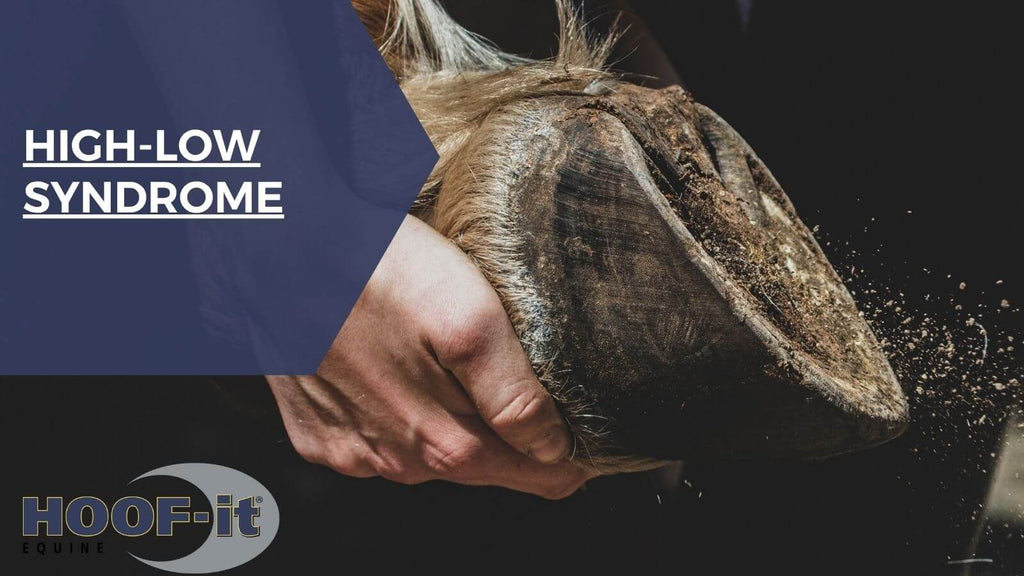High-Low Syndrome: The #1 Hoof Concern That Deserves Your Attention
When it comes to hoof health, not all hooves are created equal—literally. One of the most searched and talked-about issues in the hoof care world is high-low syndrome, and for good reason. It topped the charts in 2013, pulling in 45% more search interest than the next most common hoof topic. That kind of attention tells us one thing loud and clear: horse owners are noticing an imbalance—and they’re concerned.
So, what exactly is High-Low Syndrome?
High-low syndrome refers to a horse with asymmetrical front hooves—typically one “high” or upright hoof (often a mild club foot) and one “low” or flat, underrun hoof. It's easy to miss in the beginning, especially if you're not looking for it. But over time, that uneven loading of the limbs can lead to more serious issues like lameness, joint strain, and body imbalance.
Let’s break it down:
-
High Hoof: More upright with a steeper heel angle. Often looks boxier. This is your “clubby” foot.
-
Low Hoof: Flatter, with lower or underrun heels that often crush forward. This hoof takes on more of the concussion and load.
Why Does It Happen?
It’s not always a trimming mistake—although improper farrier work can worsen the problem. Often, high-low develops from:
-
Natural limb dominance (just like we’re right- or left-handed!)
-
Uneven shoulder development
-
Injury compensation
-
Poor hoof growth or imbalanced wear
-
Conformation inherited from mom or dad
What to Watch For
-
One hoof noticeably steeper or more upright than the other
-
Shoulder asymmetry
-
Uneven wear on horseshoes
-
A short-strided gait on one side
-
Intermittent lameness or stiffness
Why You Shouldn’t Ignore It
High-low syndrome is more than a cosmetic difference. Left unchecked, it can strain the DDFT (Deep Digital Flexor Tendon), lead to navicular issues, and affect overall performance. Many performance horses with chronic front-end lameness show signs of this syndrome—often years before a diagnosis is made.
HOOF-it®’s Pro Tips for Tackling High-Low
-
Schedule regular, balanced trims every 4–6 weeks. Your farrier should be working to support proper heel height and toe length on each foot.
-
Support hoof health nutritionally with a quality hoof supplement—because uneven hooves are often growing unevenly, too.
-
Track your horse’s stance and gait. Videos can help you catch subtle imbalances early.
-
Work with a team—farrier, vet, and bodyworker—especially for horses already showing signs of discomfort or compensation.
The Bottom Line
High-low syndrome isn’t a death sentence, but it is a wake-up call. And the fact that it remains one of the most-searched hoof issues year after year tells us horse owners are seeking answers.
With early intervention and thoughtful hoof care—HOOF-it style—you can give your horse the balance and support they need to stay happy, healthy, and sound.

